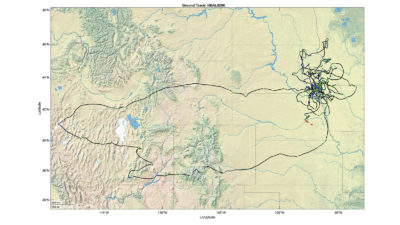Drones, hypersonics and missile defense
By Nicholas J. Mueschke and James D. Walker|December 2023
The Weapon System Effectiveness Technical Committee advances the science and technology of predicting, measuring, evaluating and improving the lethality of weapon systems.
The Russia-Ukraine war displayed various aspects and new developments in defense and weapons system use. In April, two U.S.-made Patriot missiles and air defense batteries arrived in Ukraine. The Ukrainian air force later claimed that with the missiles, they downed Russian drones, subsonic cruise missiles and aircraft, and even intercepted seven Russian Kh-47 Kinzhal air-launched hypersonic missiles over the course of a few weeks. In August, Germany agreed to supply additional Patriots to Ukraine.
In the United States, the Missile Defense Agency reported that the Flight Test Aegis Weapon System 31 Event 1a was conducted in March. Two SM-6 missiles, launched by the U.S. Navy from the guided- missile destroyer USS Daniel Inouye in the Pacific Ocean, intercepted a medium-range ballistic missile target launched from the nearby Pacific Missile Range Facility in Hawaii. The test evaluated the Aegis Weapon System’s ability to detect, tract and intercept an incoming ballistic missile in the terminal phase of its attack and furthered sea-based ballistic missile defense capabilities to protect ship and shore assets.
In the area of offensive hypersonic weapons, Lockheed Martin in February received a $1.2 billion contract modification in the Navy’s Conventional Prompt Strike, CPS, program. The contract is for the development of launcher systems and integration support onto Navy platforms. In August, the first Zumwalt-class guided-missile destroyer arrived in Mississippi for outfitting with CPS missiles and launcher systems as part of a $155 million contract with Huntington Ingalls Industries. Another program, the Long-Range Hypersonic Weapon, experienced delays. The U.S. Army had planned for this counterpart to CPS to be fully operational and deployed by the end of September, but a joint Army/Navy flight test in March was scrubbed reportedly due to a battery malfunction. Additional flight testing is scheduled prior to deployment.
The U.S. Department of Defense continued to prioritize the development of hypersonic systems, however, some programs received critical reviews from military leadership. Air Force Secretary Frank Kendall in March told a congressional committee that the service would conclude the Air-Launched Rapid Response Weapon, after an unsuccessful test earlier that month. Another flight test was conducted in August, but the Air Force did not publicly disclose the results. The Air Force is also working on the Hypersonic Attack Cruise Missile, an air-breathing, air-launched hypersonic missile. RTX of Virginia, formerly Raytheon Technologies, received the HACM contract in 2022. DARPA and the Air Force awarded $81 million to RTX in June for the More Opportunities with the Hypersonic Air-breathing Weapon Concept program, to continue maturing technologies for hydrocarbon scramjet propulsion. In March, the Navy awarded Lockheed Martin and RTX a combined $116 million to develop initial concepts for the Hypersonic Air Launched Offensive Anti-Surface weapon system, which is intended to be a follow-on to the LRASM subsonic cruise missile. In July, the Army demonstrated a new midrange capability strike developed by the Army Rapid Capabilities and Critical Technologies Office by ground launching Tomahawk cruise missiles and SM-6 missiles from a new Typhon Weapon System delivered by Lockheed Martin. This launcher provides a capability of striking targets that fall between the ranges of the ATACMS short-range ballistic missile and the LHRW intermediate-range missile.
At much lower speeds, the Defense Department is investing in electric aircraft and drones. These technologies have demonstrated capabilities in the field and are being pursued under various programs.



































